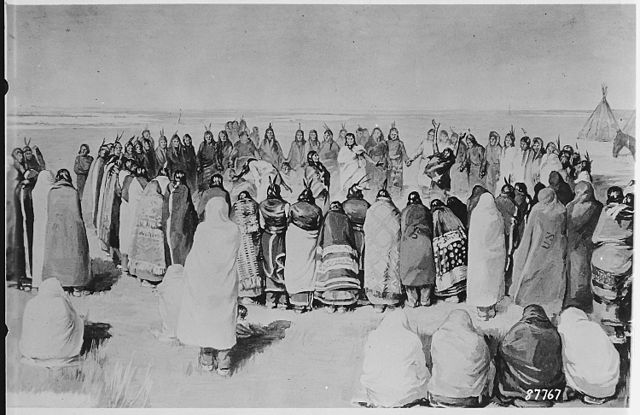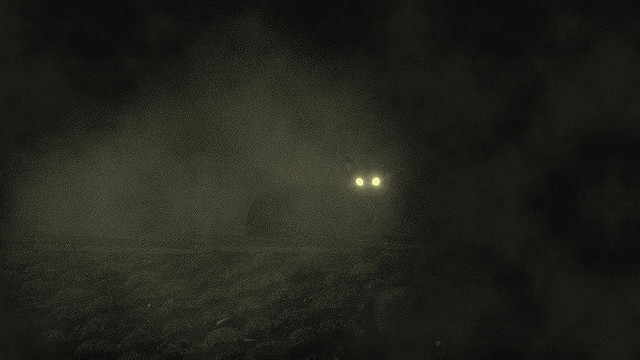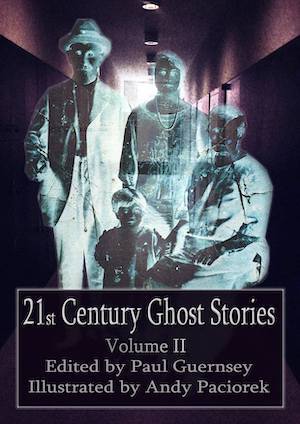by Editor
on December 16, 2014
The Legend Of Hell House (1973)
This classic British haunted-house-and-horror movie has a lot in common with The Haunting, which preceded it by a decade. Both movies feature groups of paranormal investigators who take up quarters in an old mansion where disturbing deaths have occurred, and ghosts are reputed to roam. In addition, both feature protagonists who are haunted at least as much by sexual frustration as they are by the spirits of the dead.
However, in Hell House, many of the the supernatural manifestations are more theatrical than in the earlier movie, which largely avoided explicitness in favor of reproducing the dark psychological ambiguities of the Shirley Jackson novel (The Haunting Of Hill House) on which it was based. For instance, in the Hell House scene excerpted here, poltergeists completely trash a dining room after two of the ghost hunters get into an argument. [continue reading…]
by Editor
on December 16, 2014

Turkey’s Kayakoy, A Thriving Town For Thousands Of Years, Now Stands Abandoned. Photo: Nicodem Nijaki
Ghost Towns: Sometimes Deserted Even By Ghosts
As with individual abandoned houses and other vacant buildings, deserted villages, towns, and cities sometimes gain a reputation for being haunted. However, ghost towns are so named more for the absence of living people than they are for the presence of the spirits of dead ones.
In the U.S., when people think of ghost towns they tend to imagine the often picturesque ruins of old mining towns in the American West, complete with ghostly tumbleweeds bowling down otherwise empty streets. However, there are ghost towns on every continent, if not in every country. [continue reading…]
by Editor
on December 7, 2014
The Ghosts Of Pets And Other Animals
Acording to scientific surveys of people who have experienced ghosts, more than four fifths of all apparitions are of men, women, and children who have died. However, somewhere between 10 and 20 percent of disembodied spirits reported to British researchers were manifestations of animals.
The ghosts of pets are the non-human spirits that most frequently make themselves known to people. In fact, visits by dead pets to their former owners seem to be a fairly common occurrence. People who responded to two surveys taken by Britain’s Institute of Psychophysical Research reported more apparitions of cats than of any other animal. Ghost dogs were next, followed by the spirits of horses.
Other ghost animals that popped up either in the British survey or in other types of reports including the media include bears, pigs, poultry, hares, deer, and birds. In his 2012 book, Ghosts—A Natural History: 500 Years of Searching for Proof, author Roger Clarke mentions “a couple of phantom bears in London,” a 17th century preacher in Cornwall, England, who supposedly returned in the form of a “demonic black rooster,” and a white bird that purportedly appears to the inhabitants of Arundel Castle in Sussex, England, when one of them is about to die. Clarke adds that headless dogs and horses were a frequent theme of 19th century ghost stories. [continue reading…]
by Editor
on December 6, 2014

Arapaho Ghost Dance. Illustrated By An Unknown Artist Around 1900 And Based On Photographs Taken By Anthropologist James Mooney.
Marathon Dancing To Bring Back The Dead
The Ghost Dance was a short-lived religious movement that swept through Western Native American cultures during the years that straddled the final two decades of the 1800s. The Movement came along following an extended period of disease, displacement, starvation, and genocide visited on the Indian tribes as a result of the relentless westward expansion of white settlers backed by the deadly force of the U.S. Army. Native American spiritual leaders told their followers that the Ghost Dance would reunite them with the spirits of their dead, bring back the buffalo, which had been slaughtered to the point of near extinction by European Americans, and usher in a new era of prosperity, cooperation among the tribes, and an end to European-American encroachment.
The ritual, which involved ceremonial dances that lasted for five days, originated around 1870 among the Paiute tribe of what is now Nevada. In the late 1880s, preached and promoted by Paiute holy man Wovoka, the Ghost Dance began catching on rapidly among Native groups from Oklahoma to California. The ceremonial movements themselves were based on the circle dances that many groups had performed since prehistoric times. [continue reading…]




